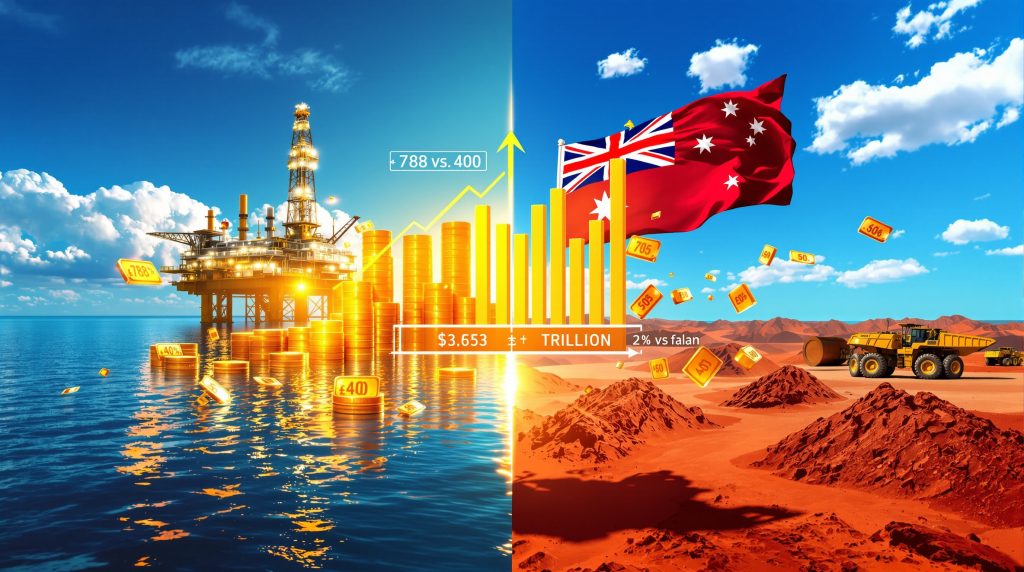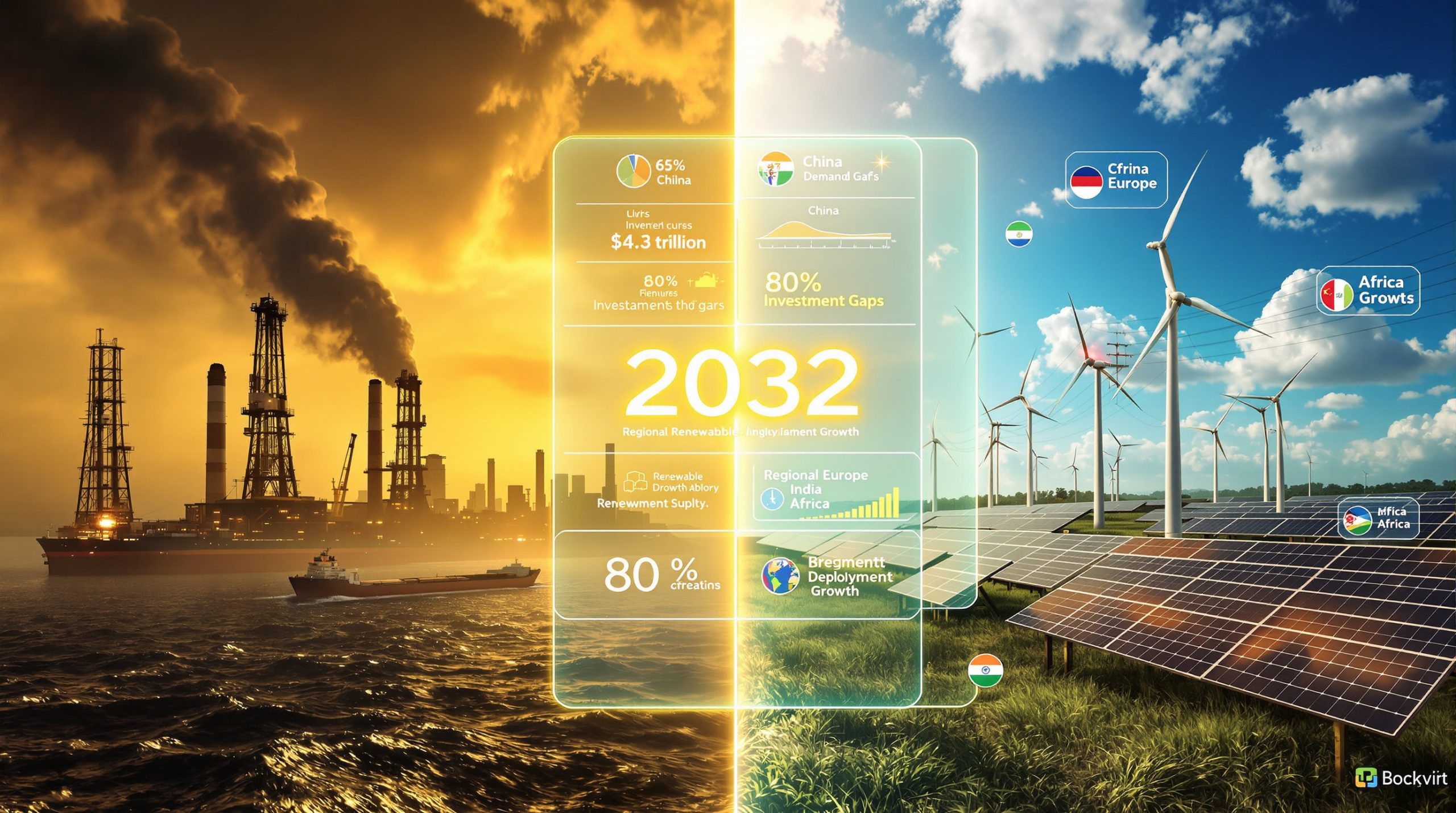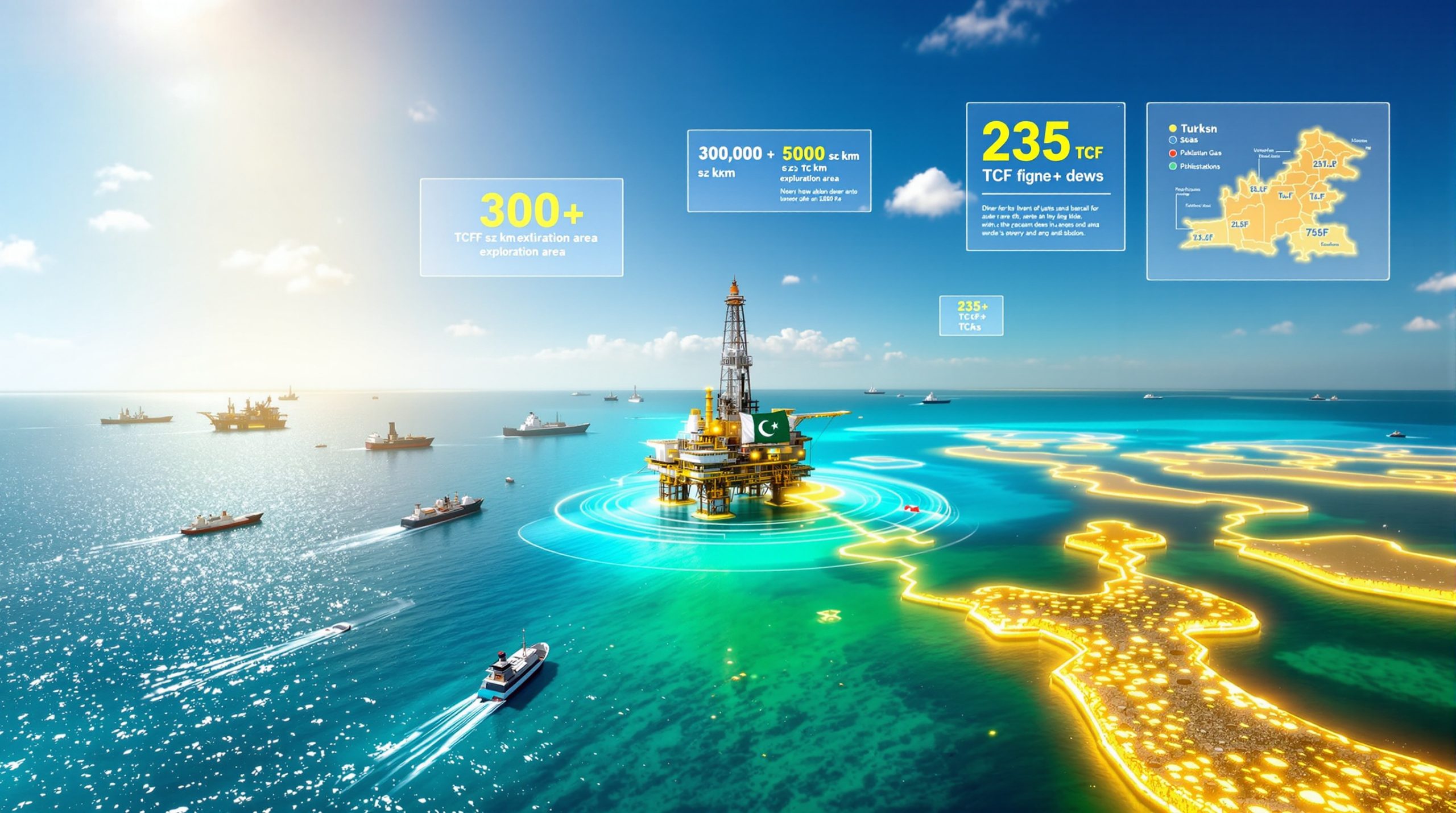What Makes Norway's Resource Tax System Unique?
Norway's approach to extracting value from natural resources represents one of the world's most sophisticated wealth-generation models. Through strategic taxation policies targeting resource extraction industries, this Nordic nation has transformed finite natural assets into permanent financial security for its citizens. The Norway's resource taxation model demonstrates how countries can maximise returns from natural endowments while building intergenerational wealth.
The Norwegian system operates on a multi-tiered taxation framework that captures extraordinary profits from resource extraction while maintaining investment incentives. This structure operates on cash-flow principles, allowing immediate deduction of capital investments to ensure only genuine economic rents face taxation.
The petroleum sector faces the most substantial burden with a combined marginal rate reaching 78%, comprising standard corporate tax (22%) plus specialised petroleum levies (56%). This framework ensures the state captures substantial value from offshore oil and gas operations while companies retain sufficient returns to justify continued investment.
Progressive Resource Rent Taxation Structure
The Norwegian model differs fundamentally from traditional corporate taxation by targeting economic rents rather than general business profits. Companies can immediately write off capital investments in extraction operations, ensuring the tax burden falls only on extraordinary returns that exceed normal business profits.
This cash-flow basis calculation creates a balanced approach where:
- Companies recover their investment costs before facing additional taxation
- Only genuine windfall profits contribute to government revenue
- Investment incentives remain intact despite high nominal rates
- Loss carryforward provisions protect companies during commodity downturns
Government Ownership Integration
The Norwegian government maintains 50% ownership stake in every production licence, creating a direct participation mechanism alongside taxation. This dual approach of ownership plus taxation maximises state revenue capture while sharing both upside potential and downside risks with private operators.
Since the mid-1990s, this ownership structure has generated substantial returns that flow directly into Norway's sovereign wealth management system, creating a permanent revenue stream independent of ongoing extraction activities.
How Does Australia's Resource Taxation Compare?
Australia's current resource taxation framework presents significant structural differences from Norway's resource taxation model, resulting in substantially lower revenue capture despite comparable resource endowments. Furthermore, the Australian approach lacks the comprehensive coverage and strategic reinvestment mechanisms that characterise the Norwegian system.
Current Australian Framework Limitations
Australia's Petroleum Resource Rent Tax (PRRT) operates at 40% on petroleum profits but includes extensive deduction mechanisms that significantly reduce effective rates. The system covers only petroleum products including stabilised crude oil, liquefied petroleum gas, ethane, and shale oil, explicitly excluding iron ore, coal, and critical minerals.
| Taxation Element | Norway | Australia |
|---|---|---|
| Petroleum Rate | 78% combined | 40% PRRT |
| Coverage Scope | Multi-sector | Petroleum only |
| Deduction Structure | Immediate capital write-off | Extensive expense deductions |
| Government Ownership | 50% direct stake | No ownership participation |
Recent government forecasts indicate the reformed PRRT will generate $4 billion less revenue than initially projected, highlighting structural weaknesses in the current approach. This downward revision suggests ongoing challenges in capturing adequate returns from resource extraction activities.
Revenue Generation Disparities
During the 2022 global energy crisis, Norway collected approximately $89.5 billion USD ($133.8 billion AUD) from resource taxes, nearly triple the previous year's record. This surge demonstrated the system's capacity to capture windfall profits during commodity price spikes.
In stark contrast, Australian analysis reveals citizens paid more than four times through HECS repayments in 2023-24 than gas companies contributed via PRRT, illustrating the limited revenue capture from resource extraction. This comparison highlights how current arrangements prioritise private returns over public benefit.
The Australia Institute's research demonstrates that individual Australians contribute more to higher education funding through personal debt mechanisms than multinational corporations contribute through resource taxation, representing a fundamental misallocation of economic burden.
What Are the Economic Outcomes of Norway's Approach?
Norway's resource taxation model has generated transformative economic outcomes that extend far beyond immediate government revenue, creating permanent wealth preservation mechanisms for current and future generations. Consequently, these outcomes provide valuable insights for other resource-rich nations considering similar reforms.
Sovereign Wealth Fund Development
The Government Pension Fund Global, valued at $2.144 trillion USD ($3.253 trillion AUD), represents the world's largest sovereign wealth fund and demonstrates the power of systematic resource revenue reinvestment. The fund booked $102.56 billion USD ($157.04 billion AUD) profit in the third quarter of 2025, driven by strong returns across basic materials, telecommunications, and financial sectors.
The fund's global reach includes:
- 1.5% of all listed company shares worldwide
- Holdings in over 8,300 companies across countries from Australia to Vietnam
- $33.6 billion AUD invested in more than 300 Australian companies
- Diversified real estate and renewable energy infrastructure investments
Social Investment Returns
Resource tax revenues enable Norway to provide exceptional public services that distinguish it among developed nations:
"Free Higher Education": Norway ranks among the few OECD nations offering completely free tertiary education, removing financial barriers to advanced learning.
"Enhanced Public Services": Above-average spending on healthcare, education, and social services compared to other developed nations.
"Budget Stability": Almost 25% of Norway's national budget derives from sovereign wealth fund returns, providing fiscal resilience during economic volatility.
Long-term Wealth Preservation
Decades of strategic reinvestment have transformed the fund's composition, with less than half of current value deriving from oil and gas revenue. The majority now comes from investment returns on equities, real estate, and renewable energy infrastructure, ensuring ongoing wealth generation independent of resource depletion.
This diversification strategy provides Norway with permanent financial security that will persist long after petroleum reserves are exhausted, demonstrating successful intergenerational wealth transfer.
Can Australia Adopt Similar Resource Taxation Models?
Economic analysis suggests Australia possesses the regulatory capacity to implement Norway's resource taxation model without fundamental legal barriers, with constraints appearing primarily political rather than technical. However, implementation would require careful consideration of Australia's unique economic and political context.
Implementation Possibilities for Australian Context
Dr. Richard Denniss from the Australia Institute confirmed that no structural impediments prevent Australia from implementing comparable taxation: there is nothing stopping Australia from imposing the kind of taxes on oil and gas that countries like Saudi Arabia, Norway, and Qatar utilise successfully.
Expanding Tax Base Coverage would require:
- Including iron ore, coal, and critical minerals energy transition under resource rent taxation
- Applying progressive rates based on profit margins rather than flat percentages
- Establishing cash-flow taxation principles with immediate investment deductions
- Creating transparent allocation between current spending and future savings
Revenue Reinvestment Framework
Australia's Future Fund currently ranks approximately 16th globally, behind other fossil fuel-rich nations including Norway, Qatar, and Saudi Arabia. Enhanced resource taxation could provide the revenue streams necessary to establish competitive sovereign wealth accumulation.
Strategic Implementation Elements could include:
- Dedicated sovereign wealth mechanisms for resource revenues
- Regional revenue-sharing for resource-producing areas
- Transparent governance structures ensuring long-term wealth preservation
- Investment strategy 2025 components asset allocation guidelines prioritising diversification and sustainable returns
How Could Enhanced Resource Taxation Support Critical Minerals Development?
Current government investment patterns in critical minerals development reveal opportunities for improved risk-sharing arrangements that could benefit from enhanced resource taxation frameworks. In addition, these reforms could support Australia's strategic positioning in global supply chains.
Current Government Investment Patterns
Australian governments have allocated $6.6 billion toward critical mineral developments since 2019, plus an additional $13 billion through the recent US-Australia critical minerals agreement. These substantial public investments often socialise development risks while privatising potential profits.
Dr. Lian Sinclair from the University of Sydney identified this imbalance, noting that the state accepts extensive downside risk while capturing minimal upside potential from successful projects. This arrangement creates asymmetric risk distribution favouring private investors over public interests.
Risk-Sharing Through Taxation Reform
Enhanced resource taxation could create more balanced public-private partnerships by capturing upside returns when projects exceed normal profitability while maintaining government support for development phase risks. Furthermore, lithium industry tax breaks could be restructured to ensure greater public benefit.
Benefits of Improved Risk-Sharing:
- Generating revenue streams to fund further strategic mineral investments
- Supporting domestic value-adding activities through mineral beneficiation opportunities
- Creating sustainable funding for infrastructure development
- Ensuring public benefit from publicly supported projects
Value-Adding Opportunities
Similar to Norway's approach with liquefied natural gas processing, Australia could capture higher export values through domestic refining of critical minerals. Western Australian lithium operations demonstrate this potential, converting raw spodumene into battery-grade lithium hydroxide for significantly higher export returns.
However, UNSW economist Richard Holden cautioned against comprehensive value-addition strategies, noting the energy intensiveness and environmental costs of rare earth refining. He suggested selective positioning rather than attempting to occupy entire supply chains, emphasising competitive advantage assessment over broad manufacturing ambitions.
What Are the Implementation Challenges and Considerations?
Implementing Norway's resource taxation model requires careful calibration to maintain international competitiveness while achieving revenue objectives and ensuring successful transition management. Moreover, policymakers must consider the unique characteristics of Australia's resource sector and political environment.
Economic Competitiveness Factors
Successful implementation necessitates maintaining:
- International Investment Attractiveness: Ensuring Australia remains competitive for global resource investment
- Operational Viability: Protecting existing project economics during transition periods
- Policy Certainty: Providing clear regulatory frameworks for future project planning
- Balanced Revenue Targeting: Optimising immediate revenue needs against long-term wealth creation
Industry Transition Management
Phased Implementation Approach could include:
- Graduated introduction timelines for existing operations
- Grandfathering arrangements for committed investments
- Comprehensive consultation frameworks with industry stakeholders
- Clear transition pathways with defined milestones and review mechanisms
Regional Development Integration
Resource taxation reform presents opportunities for enhanced regional benefit-sharing alongside establishing a critical minerals reserve:
- Community Investment Programs: Direct revenue sharing with resource-producing regions
- Infrastructure Development: Dedicated funding mechanisms for regional infrastructure needs
- Environmental Restoration: Mandatory funding requirements for post-extraction environmental rehabilitation
- Economic Diversification: Support for alternative economic development in resource-dependent areas
Why Does Resource Taxation Reform Matter for Australia's Future?
Strategic resource taxation reform represents a critical opportunity for Australia to maximise returns from finite natural endowments while building long-term economic resilience and intergenerational wealth preservation. Therefore, understanding the lessons from Norway's success becomes increasingly important for Australia's policy development.
Strategic Economic Positioning
Global trade dynamics increasingly emphasise strategic resource control, with countries like China demonstrating the power of controlling critical mineral supply chains while the United States uses trade policy as strategic tools. Australia's position as a major resource supplier creates opportunities for enhanced value capture through improved taxation frameworks.
Enhanced resource taxation could provide Australia with:
- Greater Fiscal Flexibility: Enhanced capacity for strategic economic interventions during transitions
- Reduced Tax Base Dependence: Diversification beyond traditional revenue sources
- Strategic Investment Capacity: Increased ability to fund infrastructure and social services
- Long-term Wealth Preservation: Converting temporary resource wealth into permanent financial assets
Intergenerational Equity Considerations
Norway's resource taxation model explicitly addresses intergenerational equity by converting temporary resource wealth into permanent financial assets, ensuring current resource extraction benefits future generations rather than solely funding current consumption.
Australian Applications could include:
- Creating sustainable funding for infrastructure and social services
- Building financial reserves for economic diversification initiatives
- Supporting transition toward renewable energy systems
- Maintaining living standards as finite resource deposits become depleted
Market Psychology and Global Dynamics
Current global resource markets reflect increasing strategic competition, with nations prioritising supply chain security over pure market efficiency. Australia's resource taxation approach must recognise these evolving dynamics while positioning the nation to capture maximum benefit from its natural endowments.
The recent $13 billion US-Australia critical minerals agreement demonstrates international recognition of Australia's strategic resource importance, creating opportunities for enhanced revenue capture through improved taxation frameworks.
Lessons for Australian Resource Policy
Norway's resource taxation model demonstrates how strategic policy design can transform natural resource endowments into lasting national wealth through progressive taxation that captures economic rents while maintaining investment incentives, comprehensive coverage across major resource sectors, and dedicated reinvestment mechanisms for long-term wealth preservation.
The Norwegian experience provides proven frameworks achieving both economic efficiency and social equity in resource taxation policy. Key implementation insights include the importance of cash-flow taxation principles that protect genuine investment while capturing windfall profits, government ownership participation that shares both risks and rewards, and systematic reinvestment strategies that create permanent wealth from finite resources.
For Australia, the challenge lies not in technical implementation but in building political consensus for reform that balances immediate revenue needs with intergenerational wealth creation. As global resource markets evolve and strategic competition intensifies, Norway's experience offers a roadmap for maximising returns from natural endowments while ensuring lasting public benefit.
The transformation of Norway's resource wealth into the world's largest sovereign wealth fund demonstrates the potential for similar achievements in Australia, provided political will exists to implement comprehensive resource taxation reform that prioritises long-term national prosperity over short-term private returns.
Further Exploration:
Readers interested in learning more about international resource taxation models can explore the ABC News analysis "What can Australia learn from Norway's approach to taxing resources?" for additional perspectives on comparative resource policy frameworks.
Looking to Capitalise on Resource Sector Opportunities?
Discovery Alert's proprietary Discovery IQ model delivers instant alerts on significant ASX mineral discoveries across over 30 commodities, helping investors identify actionable opportunities in resource exploration and development companies before the broader market responds. Begin your 30-day free trial at Discovery Alert today to gain a strategic advantage in Australia's dynamic resource markets.




